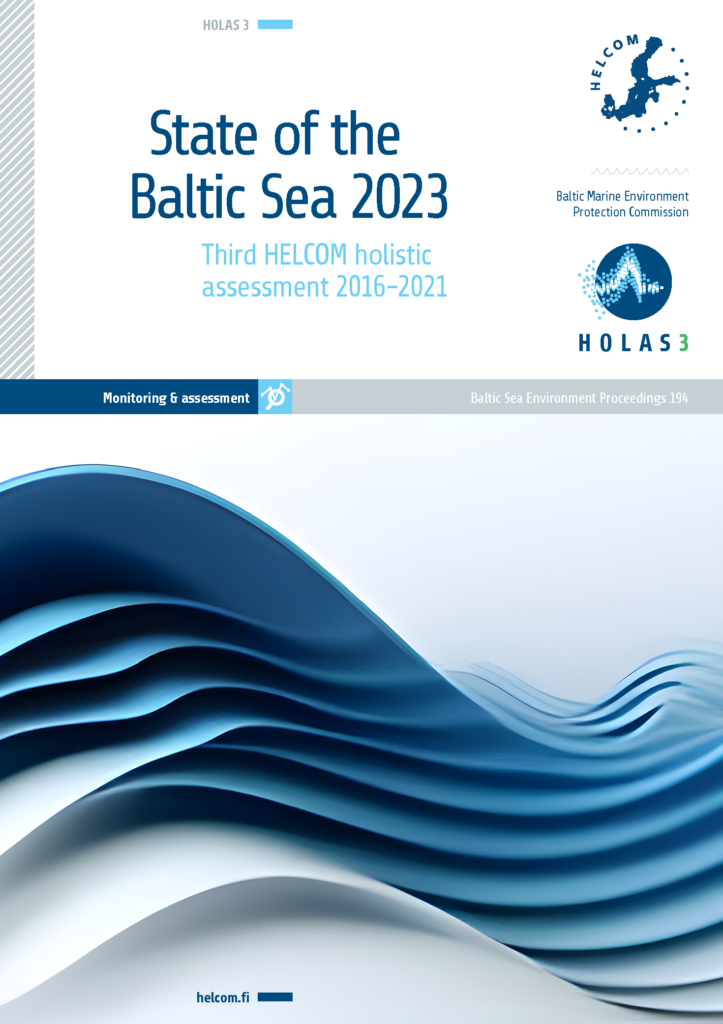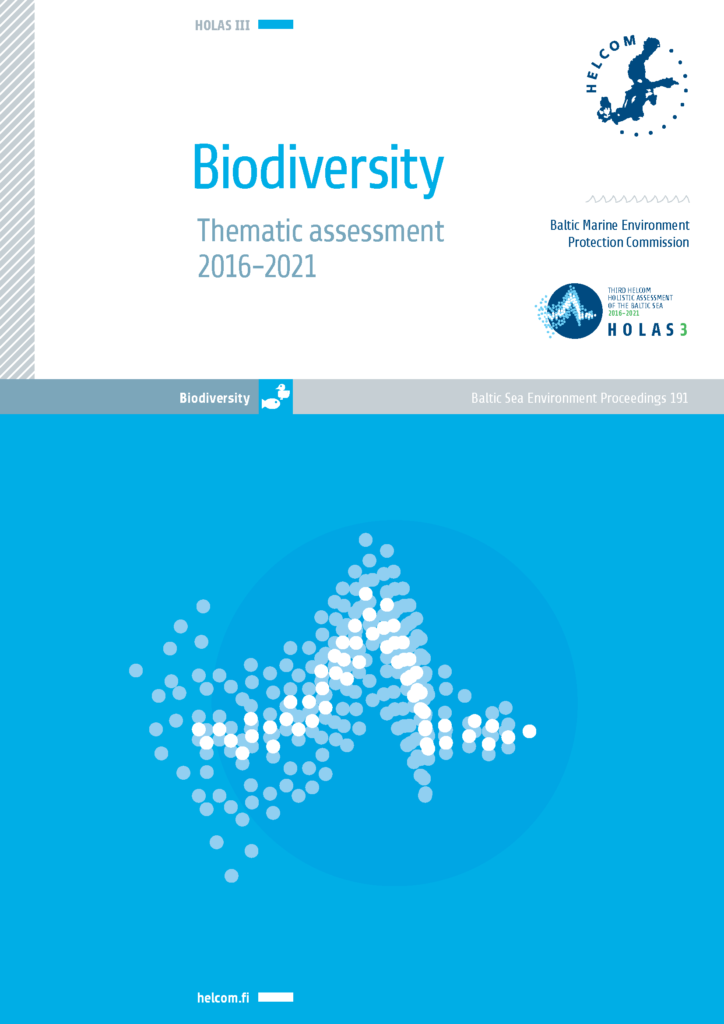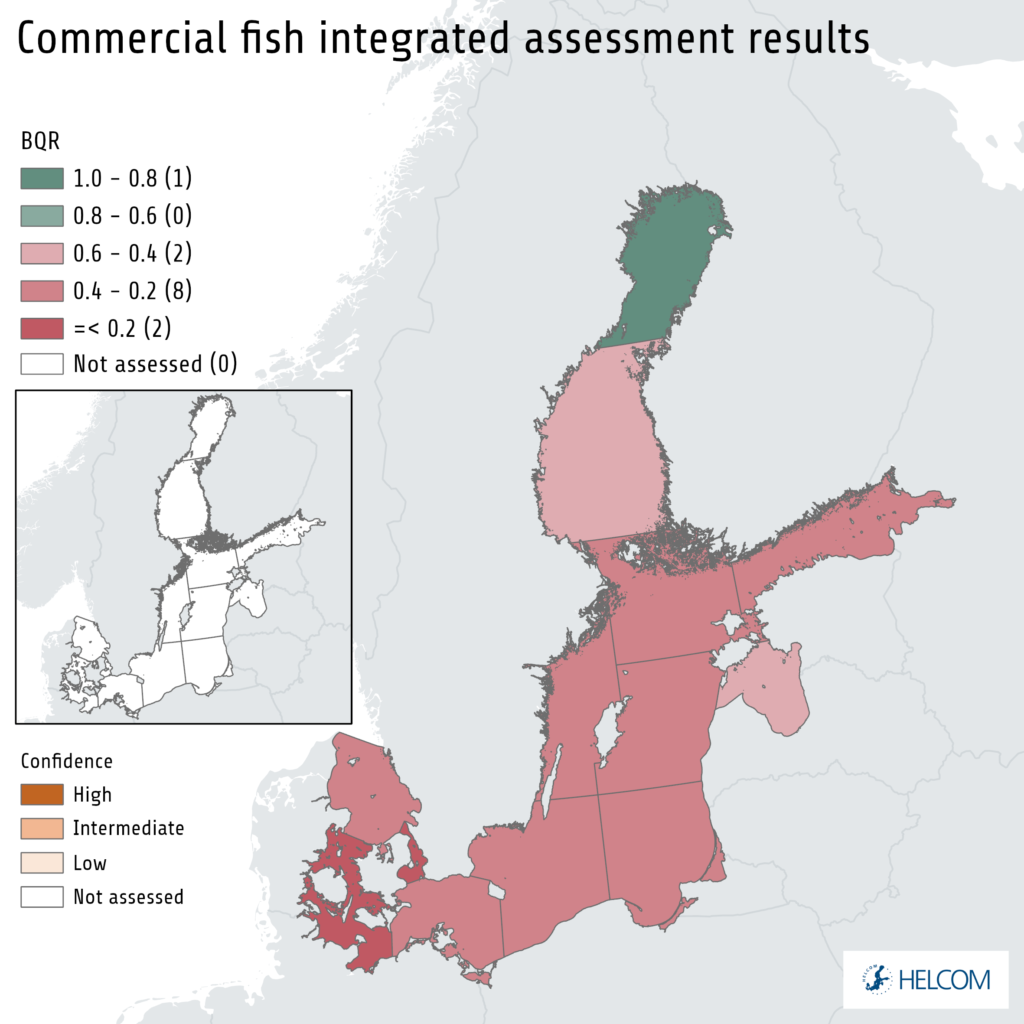FISH
The status of fish
For fish (Figure 3.8), only four out of fifteen commercial stocks in the Baltic Sea have good status on average during 2016-2021. Compared with the previous assessment period (HELCOM 2018), the status has declined for three stocks, improved for one stock, and remained unchanged for eight stocks assessed in both periods. The integrated status of coastal fish is good in two out of twenty-two assessed coastal areas (Figure 3.9b). For migrating species, salmon (Salmo salar) stocks in the northern Baltic rivers have improved, but their status is far from good in many rivers further south. The European eel (Anguilla anguilla) remains critically endangered, and efforts to re-introduce the regionally extinct sturgeon (Acipenser oxyrinchus) are ongoing.
For the first time, the HOLAS assessment includes evaluation of changes in fish age/size structure (HELCOM 2023a). Regional work should continue to develop these assessments in relation to definitions of good environmental status, to ensure the overall assessment has sufficient confidence.
Figure 3.9a. Summary of results from the integrated assessment of commercial fish. Biological quality ratios (BQR) and Ecological Quality Ratio (EQR) above 0.6 correspond to good status. Assessment confidence is presented in the inserted small maps. The spatial assessment units for commercial fish are the ICES sub-divisions. Source: HELCOM 2023a.
Why is this important?
Fish are a key food source for humans, waterbirds, marine mammals, and other fish. Deterioration of fish populations affects fishing opportunities for people as well as food provisioning for many Baltic Sea species. Effects can also be seen in the long term, since depleted stocks are less productive than healthy stocks.
Healthy fish populations contribute to several ecosystem services. The role of piscivores in regulating food webs and maintaining trophic structure is increasingly recognized, in connection to worrying declines in several key piscivores in the Baltic Sea, such as cod and pike.
Deteriorated stocks are more vulnerable to environmental changes. Because of the central role of fish in the food web, this also lowers the overall resilience of the ecosystem

State of the Baltic Sea 2023 — The third HELCOM holistic assessment (HOLAS 3)
State of the Baltic Sea 2023 is a synthesis report that builds on, and integrates, results from a wide range of assessment products produced within the third HELCOM holistic assessment. Its role is to link information from the underpinning assessment products together, thus highlighting the holistic aspects. With this in mind, the summary report focuses on presenting the results and on an in-depth look at why we are seeing these results, providing over-arching context and analysis. The report helps develop a clearer picture of where we are and how things are connected, supporting coordinated and effective measures to strengthen the Baltic Sea environment.

Thematic assessment
Biodiversity
The thematic assessment report on the biodiversity status of the Baltic Sea (HELCOM 2023a) presents results from status assessments relating to biodiversity, based on HELCOM indicators, integrated assessments and regionally agreed data for the years 2016-2021. The assessment reveals improvements in spatial coverage compared to HOLAS II (2011-2016), incorporates new indicators and introduces novel topics. For the first time, trends for indicators and assessment results are compared across assessment periods.
However, further work remains to fill gaps in spatial coverage, improve precision of HELCOM indicators and to strengthen relevance to ecosystem-based management.


